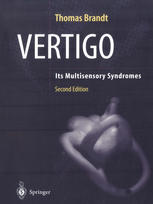

Most ebook files are in PDF format, so you can easily read them using various software such as Foxit Reader or directly on the Google Chrome browser.
Some ebook files are released by publishers in other formats such as .awz, .mobi, .epub, .fb2, etc. You may need to install specific software to read these formats on mobile/PC, such as Calibre.
Please read the tutorial at this link: https://ebookbell.com/faq
We offer FREE conversion to the popular formats you request; however, this may take some time. Therefore, right after payment, please email us, and we will try to provide the service as quickly as possible.
For some exceptional file formats or broken links (if any), please refrain from opening any disputes. Instead, email us first, and we will try to assist within a maximum of 6 hours.
EbookBell Team

4.7
36 reviewsThis monograph has been written for clinicians who are involved in the management of the dizzy patient and for scientists with a particular interest in the multi-sensorimotor mechan isms that subserve spatial orientation, motion perception, and ocular motor and postural con trol. Special emphasis has been put on making the correct diagnosis, and detailed recommendations have been given for specific treatments. The second edition has resulted in an almost completely new book due to the dramatic expansion in the 1990s of our understanding of vestibular function and dis orders. A few rele vant examples include the novel concept of canalolithiasis, as opposed to cupulolithiasis, both of which are established causes of typical posterior and horizontal canal benign paroxysmal positioning vertigo; familial episodic ataxia land II have been identified as inherited chan nelopathies; otolithic syndromes were recognized as a variety separate from semicircular canal syndromes; several new central vestibular syndromes have been described, localized, and attributed to vestibular pathways and centres; a new classification based on the three major planes of action of the vestibulo-ocular reflex is available for central vestibular syn dromes; and the mystery of the location and function of the multisensory vestibular cortex is slowly being unravelled. This book differs from other clinical textbooks in that it is not divided into two parts: anatomy and physiology, on the one hand, and disorders, on the other.